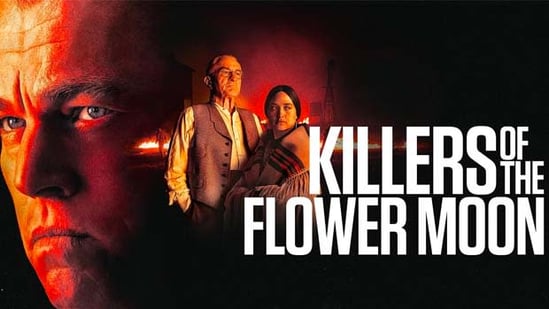Killers of the Flower Moon: A Tale of Betrayal, Justice, and Forgotten Histories
Cinemapedia
Martin Scorsese’s Killers of the Flower Moon is a harrowing and meticulously crafted exploration of a dark chapter in American history. Released in 2023, the film is based on David Grann’s non-fiction book of the same name, which recounts the Osage murders of the 1920s—a chilling conspiracy fueled by greed and systemic racism. With powerhouse performances from Leonardo DiCaprio, Lily Gladstone, and Robert De Niro, Scorsese delivers a film that is as haunting as it is illuminating.
A Tragic Web of Greed and Betrayal
Set in the oil-rich lands of Osage County, Oklahoma, the story follows the systematic murders of Osage Nation members, who had become wealthy after oil was discovered on their land. The film centers on Ernest Burkhart (Leonardo DiCaprio), a World War I veteran who marries Mollie Kyle (Lily Gladstone), an Osage woman, only to become entangled in a sinister plot orchestrated by his uncle, William "King" Hale (Robert De Niro).
As the death toll rises, the newly formed FBI begins an investigation, exposing a network of greed, corruption, and betrayal. The narrative is both a murder mystery and a searing indictment of the exploitation faced by Indigenous communities, making it a deeply resonant and morally complex tale.
A Cinematic Elegy
Scorsese’s direction, combined with Rodrigo Prieto’s stunning cinematography, brings the world of 1920s Osage County to life. The vast landscapes, contrasted with intimate, dimly lit interiors, create a visual dichotomy that mirrors the film’s themes of beauty and corruption.
The attention to detail in costume and production design immerses viewers in the era, while the use of natural light and shadows enhances the emotional weight of key moments. Every frame feels deliberate, capturing the dignity of the Osage people alongside the insidious forces working against them.
A Haunting Melody
The film’s score, composed by Robbie Robertson, blends traditional Indigenous music with somber orchestral pieces, creating a soundscape that is both evocative and respectful. The use of silence is equally powerful, amplifying the tension and gravity of the unfolding tragedy.
Music becomes a narrative tool, honoring the Osage culture while underscoring the profound loss and resilience at the heart of the story.
The Cost of Greed and the Pursuit of Justice
Killers of the Flower Moon is a poignant exploration of systemic injustice and the devastating impact of greed. It confronts the viewer with uncomfortable truths about America’s history, challenging them to reflect on the exploitation of marginalized communities.
At its core, the film is a story about love and betrayal. Mollie’s unwavering strength in the face of unimaginable loss contrasts sharply with Ernest’s moral failings, creating a deeply personal lens through which the broader societal issues are examined. The pursuit of justice, though partial and flawed, serves as a glimmer of hope in an otherwise bleak narrative.
A Masterpiece of Historical Storytelling
Killers of the Flower Moon is a monumental achievement that combines Scorsese’s storytelling prowess with a commitment to historical accuracy and cultural respect. It is a film that educates as it entertains, shedding light on a forgotten atrocity while honoring the resilience of the Osage Nation.
With unforgettable performances, breathtaking visuals, and a narrative that is both intimate and expansive, Killers of the Flower Moon stands as a testament to the power of cinema to confront history and inspire reflection. It is a haunting reminder of the human cost of greed and the enduring fight for justice.


